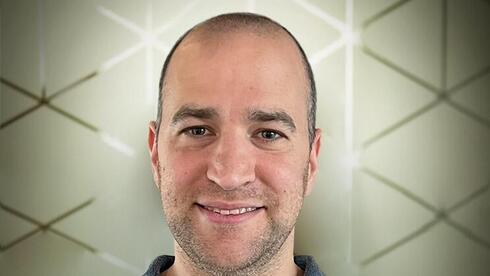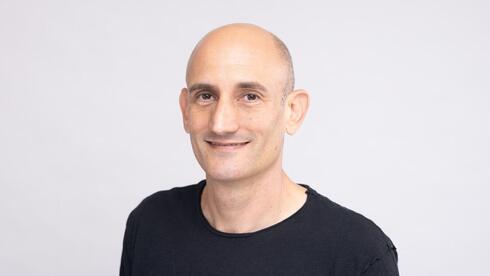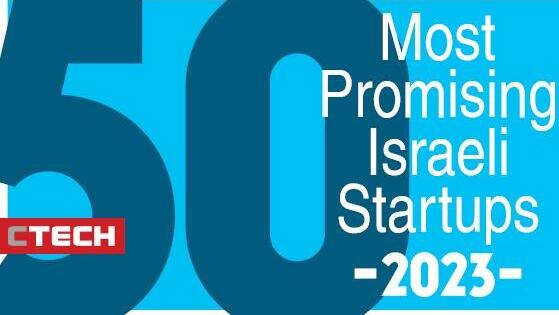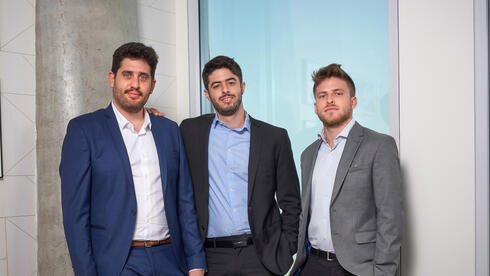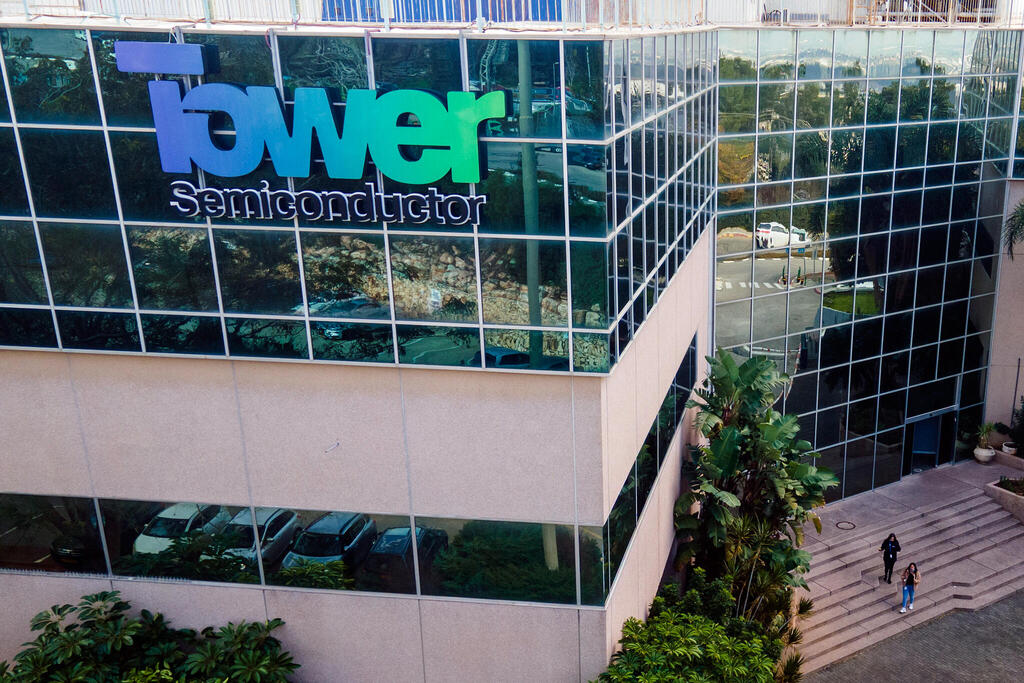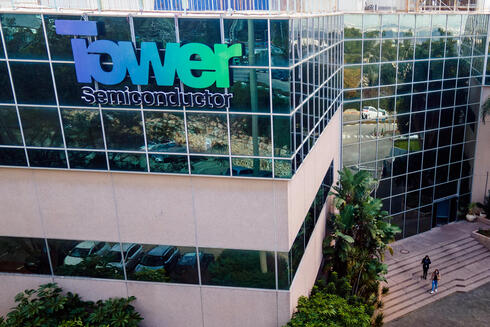
AnalysisTower extremely optimistic regarding chip business, but needs to back up words with results
Analysis
Tower extremely optimistic regarding chip business, but needs to back up words with results
In a presentation published with the third quarter reports, Tower revealed a long-term model of sales and profitability potential in which the company's revenues will jump to $2.66 billion, an increase of 87% compared to this year's expected revenues, and the operating profit will jump by 166% to $560 million
Russell Ellwanger, the man behind Israeli chip giant Tower, can finally break his silence. After a year and a half in which Tower refrained from providing forecasts following the merger deal with Intel, which was ultimately canceled, the chip company has finally provided a model that shows a jump in sales and profit in a few years. The model was published as part of the third quarter reports published last month.
According to the model, in a few years, Tower's annual sales are expected to reach $2.66 billion and the net profit will be at half a billion dollars. The company did not set a deadline for meeting the target shown in the model, but from the conversations of the analysts after the publication of the report, it can be understood that the intention is to reach this target within about four years.
The model, which presents the company's potential and is not its forecast, led in our estimation to an increase in the share price at the time of publication of the third quarter report, even though the report reflected the negative business cycle in the chip sector and despite an even weaker forecast for revenues in the fourth quarter.
In February 2022, Intel and Tower announced the signing of a merger agreement between the companies. According to the agreement, if several conditions were met, Intel would purchase all Tower shares in exchange for $53 per share, which reflected a value of $5.8 billion for the company. The announcement of the deal led to a jump in Tower's share price, but as time passed, the likelihood that the deal would not be completed increased, mainly because the chance of receiving approval for the merger from the Chinese regulator on the set schedule was low.
Tower's stock fell gradually until the announcement of the cancellation of the agreement, which no longer surprised investors. Intel paid Tower financial compensation for canceling the agreement, the net consideration for which was $290 million (after deduction of tax and other expenses). Tower now has an excess of financial assets over financial liabilities of $1 billion. In addition to the large amount of cash it has, and despite the negative business cycle in the chips sector this year, Tower's activity generates operating profit and high cash flow. But investors in Tower stock took a hit with the cancellation of its acquisition deal, and now the company continues to build its future as an independent, profitable and growing company.
Tower manufactures chips in the analog field that require a lot of customization of production, which is where its relative advantage lies. Its specialization in the field allows it to avoid a race of manufacturing chips as small as possible, and specialize in adapting the chips produced in old factories to the customers' special needs. Most of Tower's chips are intended for three main markets: RF (Radio Frequency), power control and imaging chips.
Tower has two manufacturing plants in Migdal Ha'emek, one in California - which was added to the company in 2008 when Tower merged with chip manufacturer Jazz - and one in San Antonio - whose purchase from Maxim was completed in February 2016. In addition, Tower has 51% of a joint venture originally signed with Panasonic that included three factories in Japan, one of which - Arai - was closed. In September 2020, Panasonic sold its semiconductor operations, including its share in the joint venture with Tower, to Nuvoton, a company with operations in Taiwan. In addition, Tower has agreements to expand its production capacity in factories in Italy and the USA.
Slowdown in the chip market
2022 was a record year for Tower with revenues of $1.68 billion and an operating profit of $302 million - this after neutralizing excess revenues over expenses of $10 million resulting from the closure of the plant in Japan. The net profit in 2022 excluding that income was $260 million. In the fourth quarter of 2022, there has already been a decrease in revenues relative to the previous three quarters of the year, a decrease that results from the beginning of a negative business cycle in the chip market. On the other hand, Tower's operating profit in the third and fourth quarters increased thanks to the cessation of production at the Arai plant and the reduction of sales to the Nuvoton company.
In January-September this year, the slowdown in the chip market had a big impact on Tower. The company's revenues decreased by 16.3% compared to the corresponding period, to $1.07 billion, and the operating profit, excluding the effects of compensation from Intel and the closing of the plant in Japan, was $160 million. The company issued a weak forecast for sales of $350 million in the fourth quarter, which is usually the stronger quarter seasonally. The expected operating profit of Tower this year is set to be cut by 34% according to the average of the analysts' forecasts, to $200 million. The decrease in net profit this year, which is expected to be $213 million, is much more moderate than the decrease in operating profit thanks to the financing income that comes from Tower's huge cash cow.
The decrease in revenues and profitability is reflected in the utilization rates of Tower's factories, which is slightly more than 60%. In the third quarter, the utilization rate of the fab 2 plant in Migdal Ha'emek was 75%, while the utilization rate of the plant in California was only 40%. The utilization rate of the other factories ranges from 55% to 65%. That is, the demands in this quarter were substantially lower than Tower's production capacity.
Since the first quarter of the year is seasonally weaker, no increase in Tower's sales is expected in this quarter relative to the sales of the fourth quarter, so it is likely that the beginning of 2024 will also be weak. But even in a period of low demand, Tower manages to generate significant operational profitability. When a renewed tide begins in the field of chips, Tower's profitability is expected to climb.
The engine of growth - designing new chips
In 2021, Tower entered into an agreement with ST Microelectronics to invest in a new factory for the production of chips with a diameter of 300 mm in Italy, which will allow Tower to use part of the factory's production capacity. Tower invested until the end of the third quarter of this year about $250 million in the purchase of equipment for this plant and it is expected to invest an additional $250 million in it in the current investment phase.
It is likely that this plant will lead to substantial sales for Tower starting in 2025. In September of this year, Tower and Intel signed an agreement according to which Tower will invest approximately $300 million in equipment for the production of chips with a diameter of 300 mm at Intel's factory in New Mexico, USA. After this investment is completed, Intel and Tower will manufacture at the plant with Tower's equipment for Tower's customers. For Intel, the deal allows for income from operating part of the factory for Tower customers, and for Tower, the deal allows for a substantial expansion of production capacity.
Most of Tower's factories currently produce chips with a diameter of 200 mm, and only one factory produces chips with a diameter of 300 mm, the transactions with ST Microelectronics and Intel are expected to give Tower a substantial production capacity of chips of this diameter, and their success depends mainly on the ability to design new chips and gain a substantial market share. The total remaining investment for Tower in the two factories is $550 million and an additional capital investment of $180-200 million, which Tower is expected to invest every year on an ongoing basis in its existing factories, so that they are suitable for the production of advanced chips. Tower's cash reserves, in addition to the cash flow from current operations expected in the next two years, is greater than the required investment.
Optimistic model for revenue and profit potential
In a presentation published with the third quarter reports, Tower added a long-term model of sales and profitability potential from the existing production capacity, for which the company announced that it would invest in its establishment. This model assumes production with an optimal utilization of approximately 85% in all existing factories, and also in Tower's share in factories in Italy and New Mexico. Under this assumption, the company's revenues will jump to $2.66 billion, an increase of 87% compared to this year's expected revenues, the operating profit will jump by 166% to $560 million, and the net profit will jump to $500 million.
The increase in the long-term revenue model relative to the expected revenue this year is about $1.24 billion. Tower does not specify which part of the increase will be due to the assumption of a transition to production at 85% utilization in the existing plants and which part will be due to the additional production capacity in plants in Italy and New Mexico.
According to our calculation, an increase from 60-62% utilization to 85% utilization in the existing plants will increase Tower's revenues by approximately $550 million to $600 million. From this it follows that the total production capacity in the two new plants, at optimal occupancy, is expected to be approximately $640 million - $690 million.
The expected increase in operating profit, according to the presentation, relative to this year's expected operating profit is $350 million, less than 30% of the increase in revenues. Most of the increase in the operating profit that Tower presents in the model stems from the assumption of a transition to production with optimal utilization in the existing plants and not from the production capacity that will arise from the new plants. Tower will have to reach relatively high utilization in both plants for them to lead to an operating profit.
Tower will in the next three years quintuple the production capacity of chips with a diameter of 300 mm. Therefore, the long-term model that Tower provided describes a very optimistic scenario, the realization of which requires a turning of the tide in the business cycle of the chip field and the ability of Tower to increase its market share, mainly In the field of chips with a diameter of 300 mm.
Benchmarked by its Israeli competitors
Tower shares traded at a price of $30.5 per share at the end of the week, which reflects a market value of approximately $3.33 billion for the company, after the stock lost approximately 30% of its value since the beginning of the year, and its current operating profit multiple is 10.5. For comparison, Nova's operating profit multiplier relative to this year's expected operating profit is 28.5, while Camtek's operating profit multiplier is 34.4.
The gap in the operating multiples was created mainly because of the sharp drop in Tower shares this year and on the other hand the jump in Camtek and Nova shares which have risen since the beginning of the year by 184% and 57% respectively. That is, the capital market is much more optimistic about the growth potential of Camtek and Nova than about the growth potential of Tower. The analysts' forecasts for 2024 foresee growth in sales and profits of Camtek and Nova compared to stability in sales and profit of Tower, mainly because the field of measuring devices is expected to recover before the recovery of the general chip market. The large difference in the operating profit multiples between Tower and the two other large Israeli companies in the field of chips means that Tower's stock is relatively cheap compared to Camtek and Nova, and the success of its strategy will determine the direction in which it heads.
Uri Tal Tenne is an economist at an Israel-based tech company.




